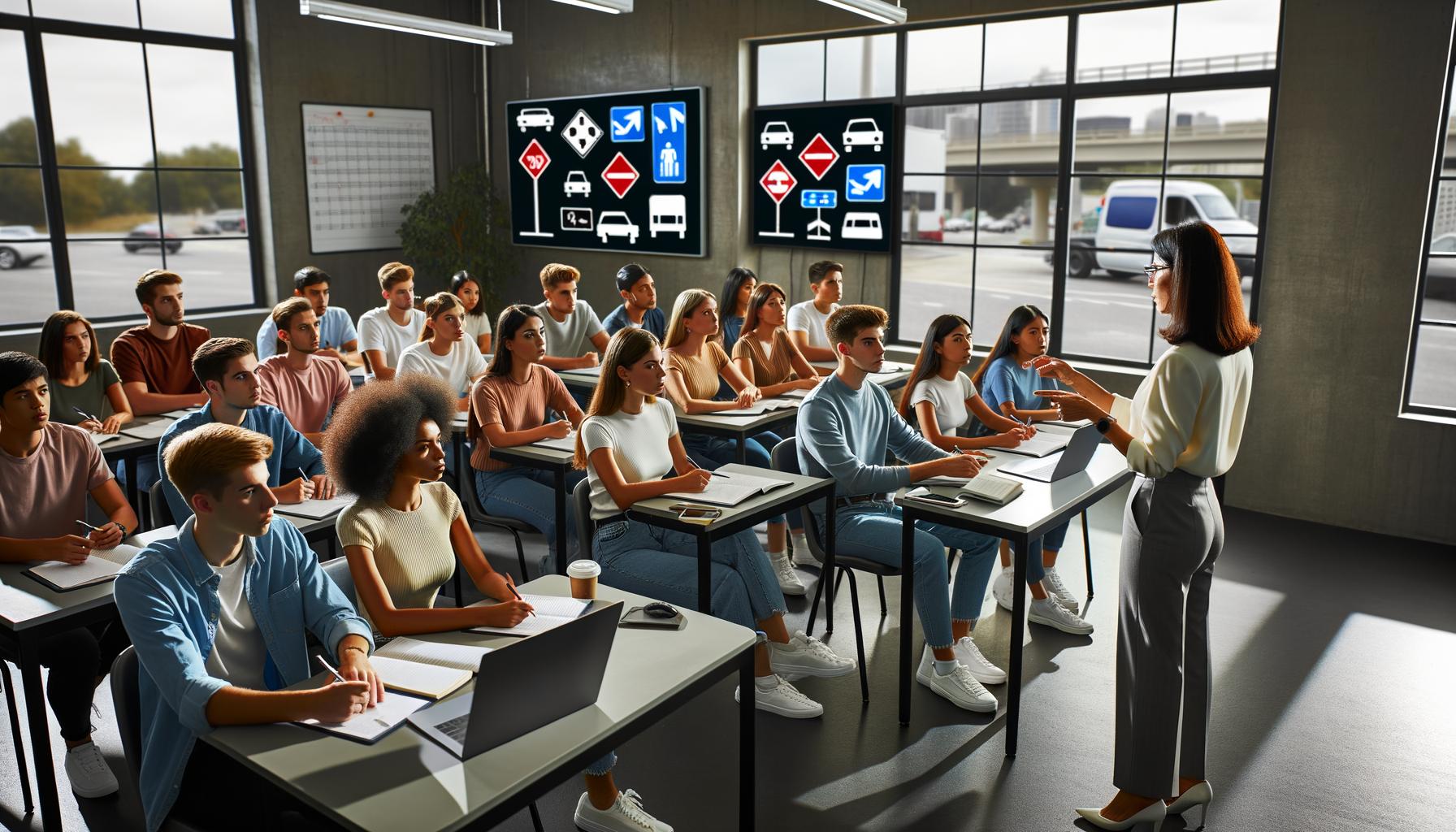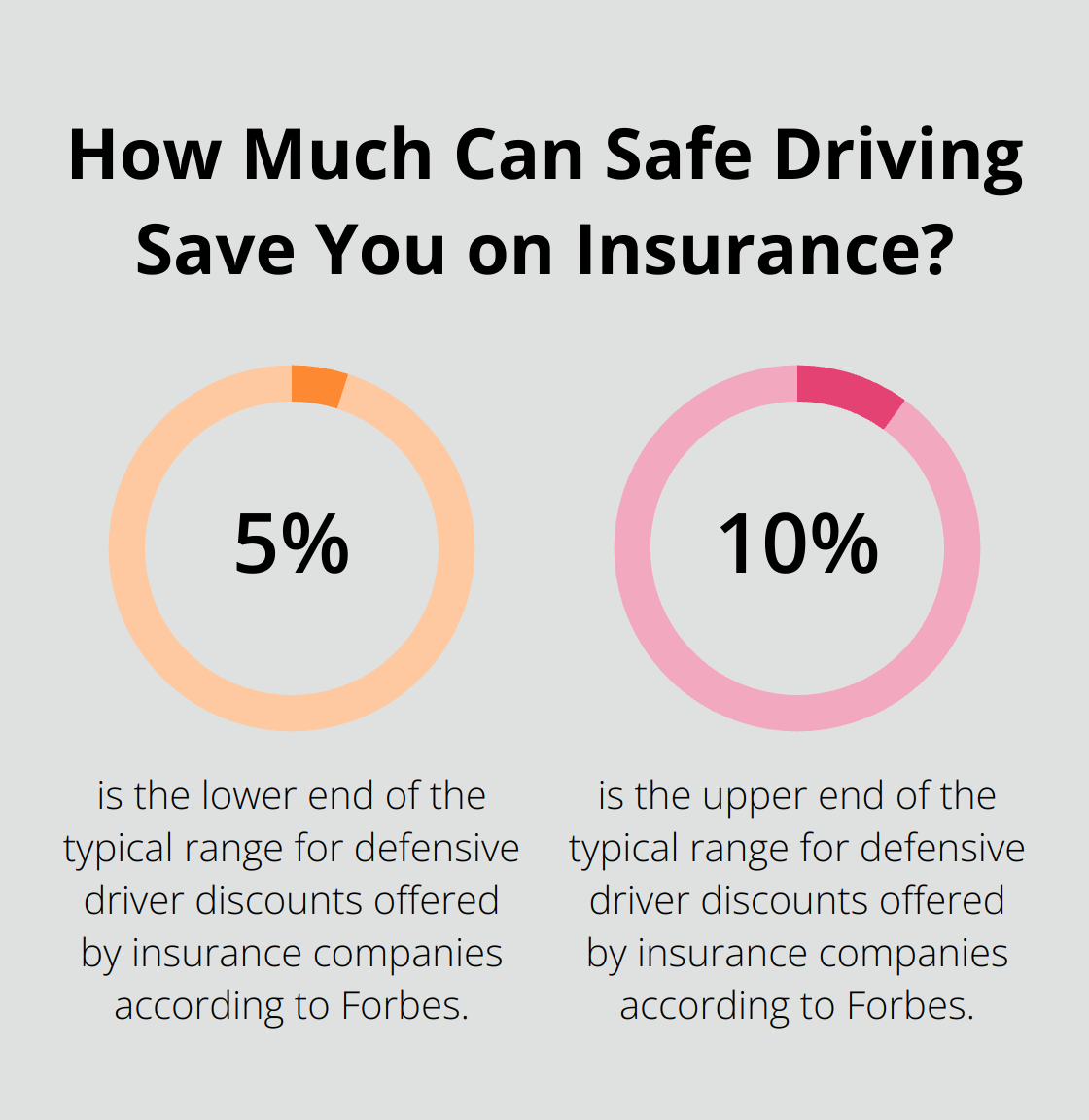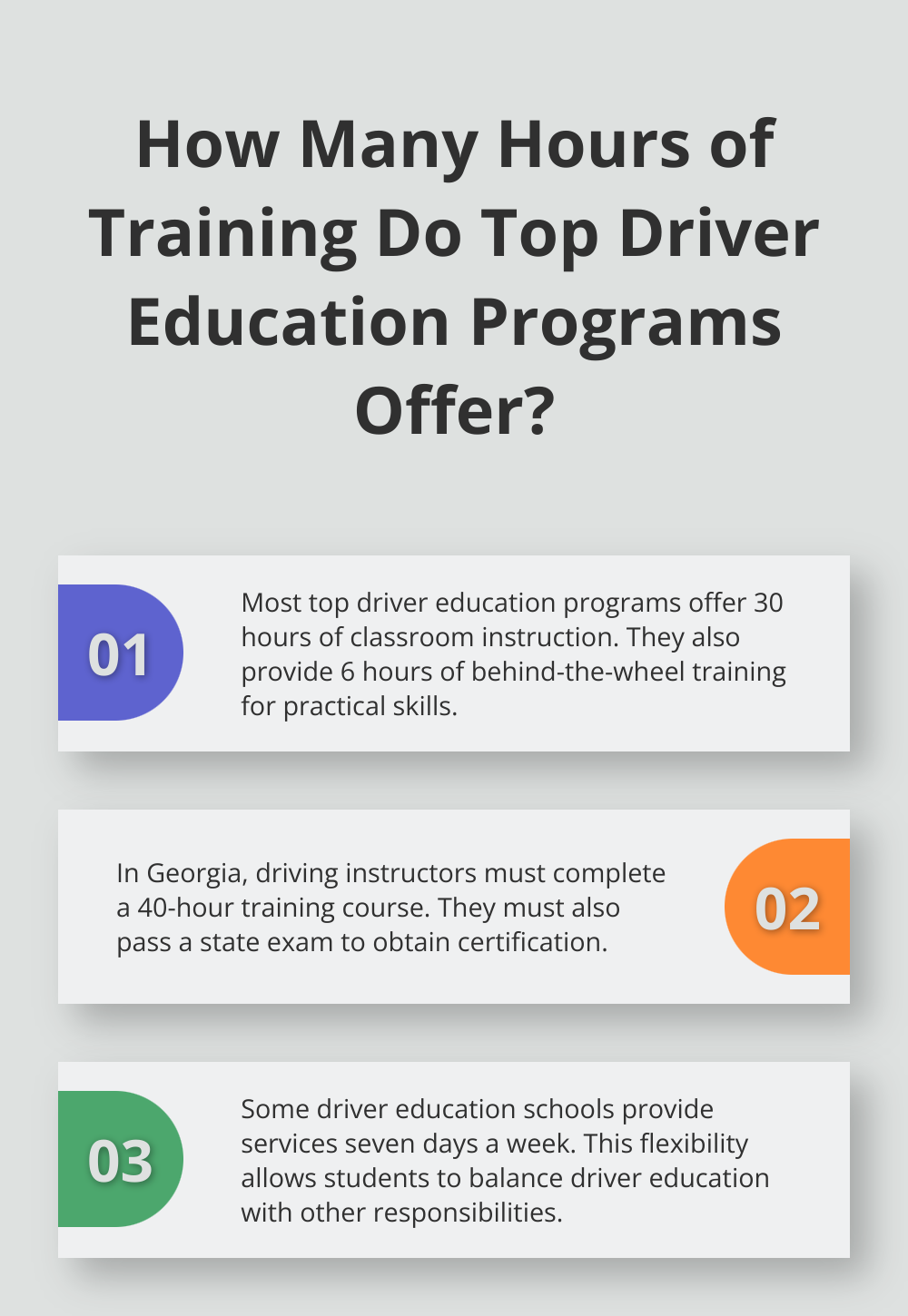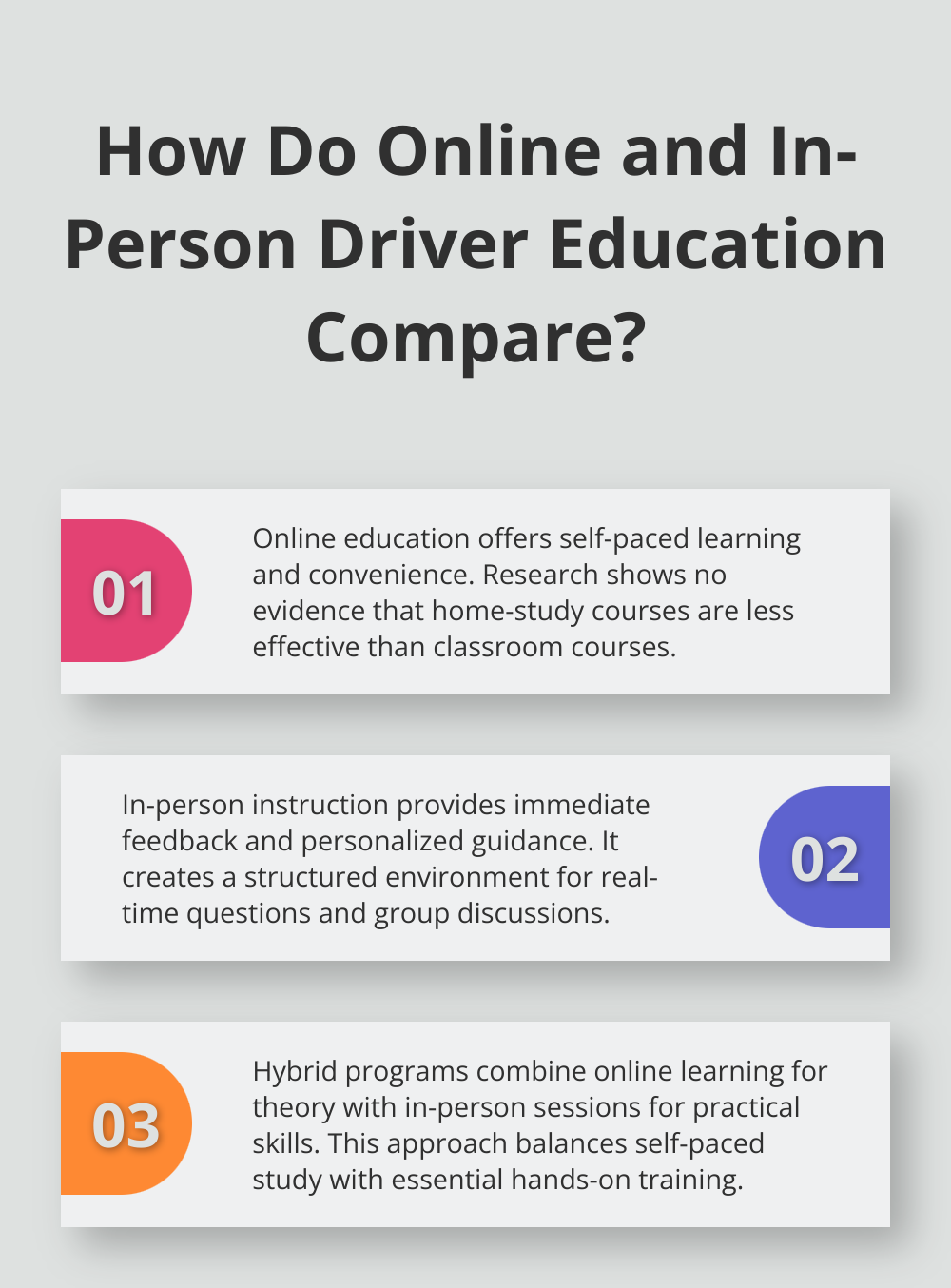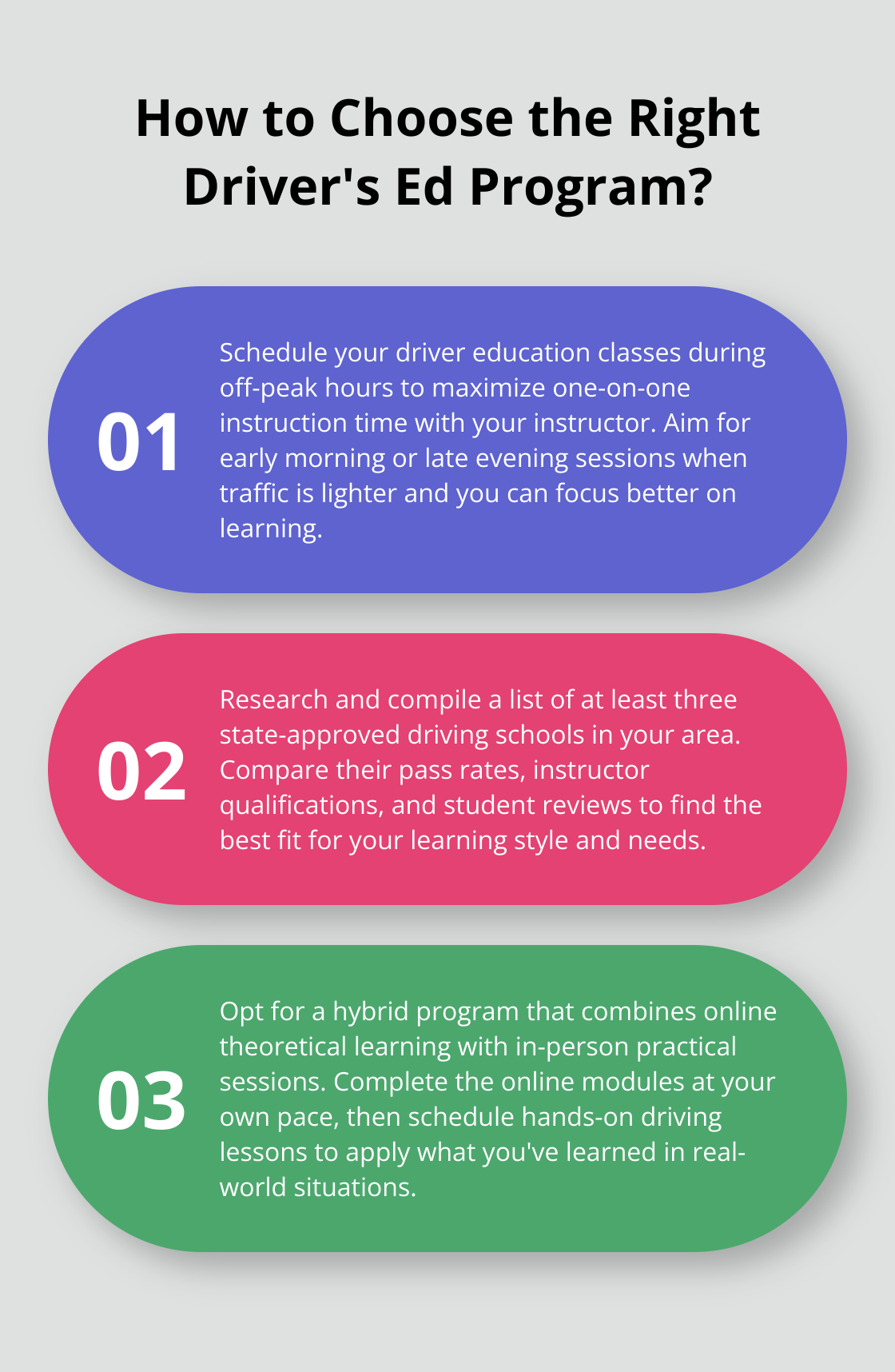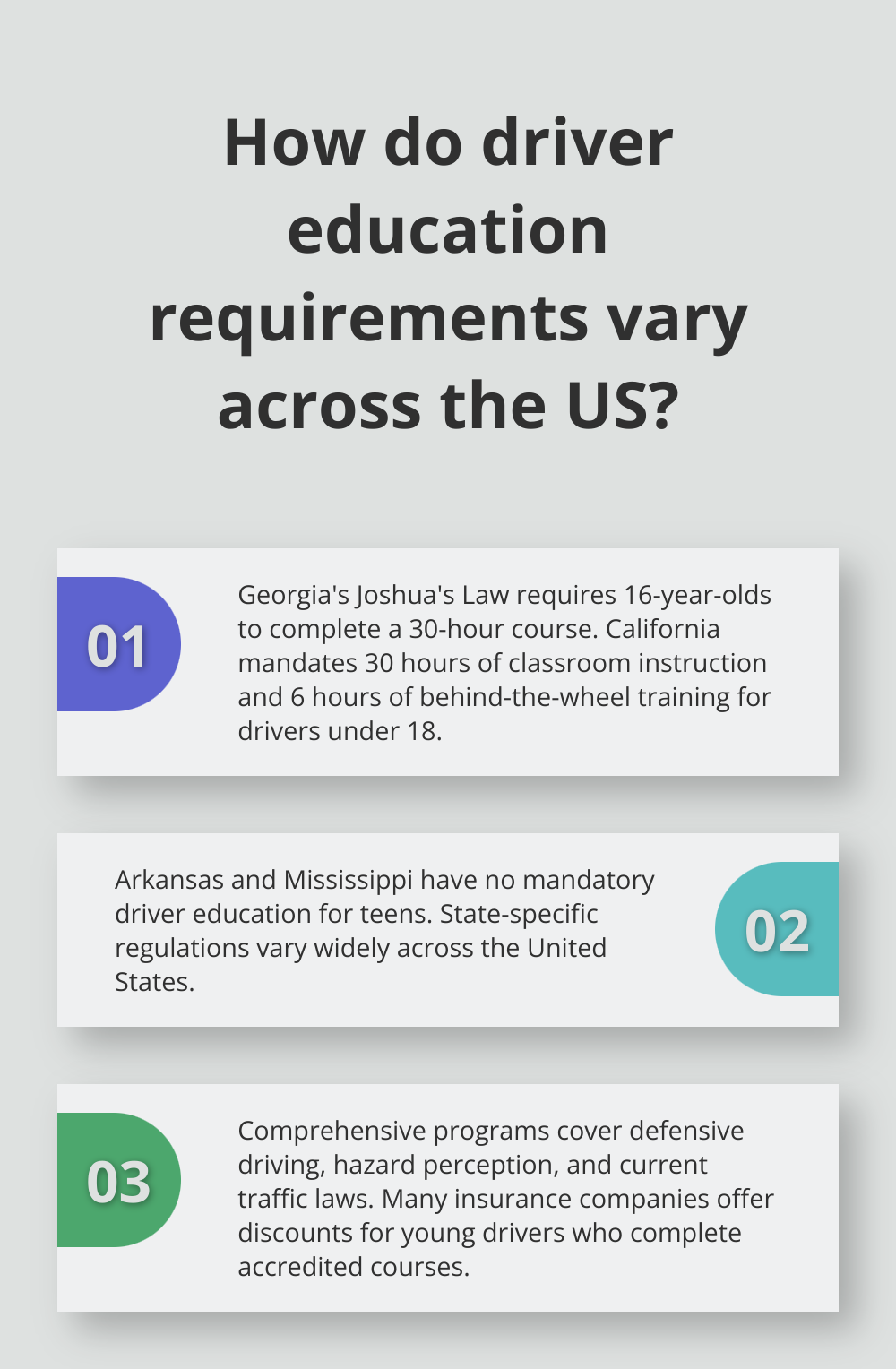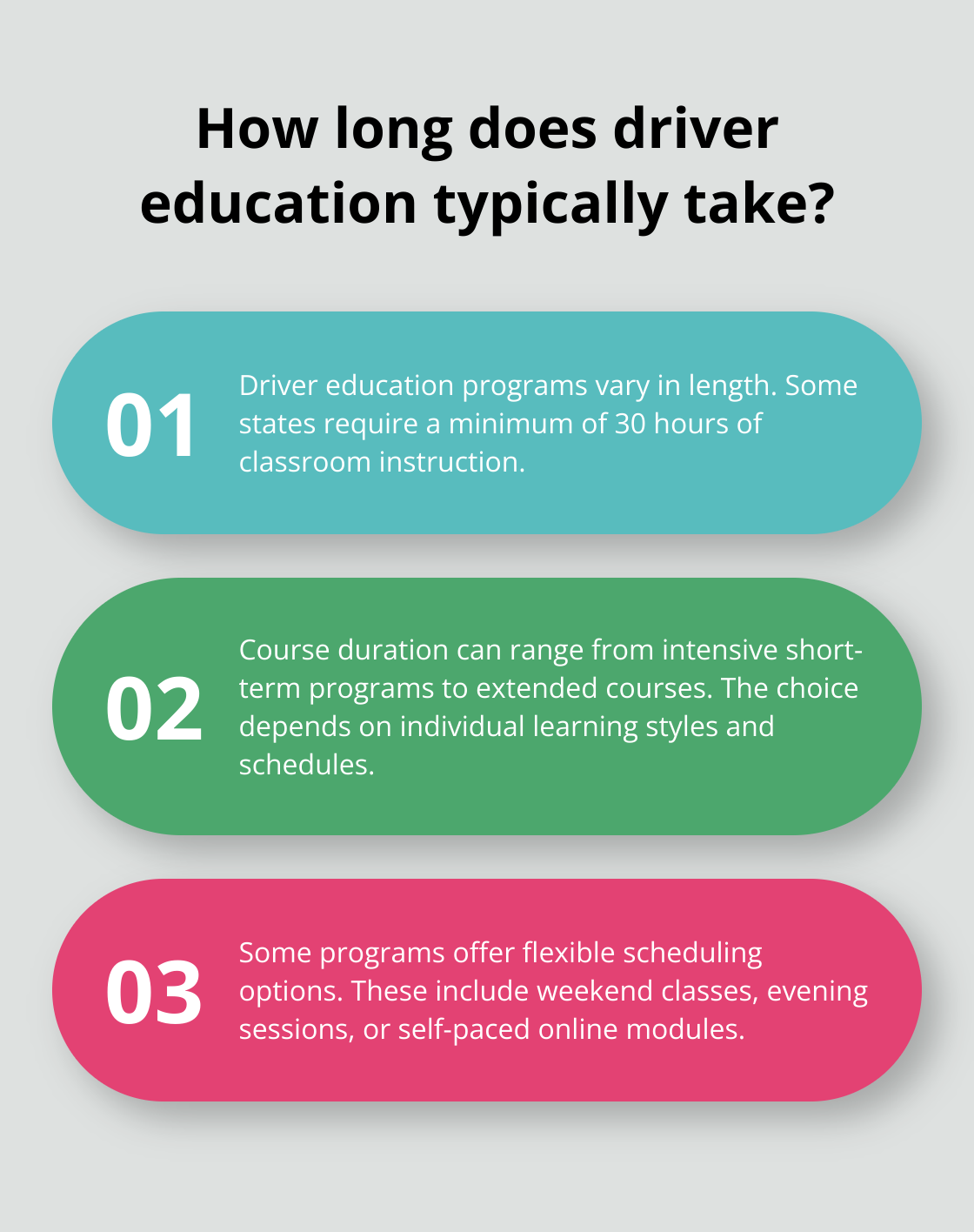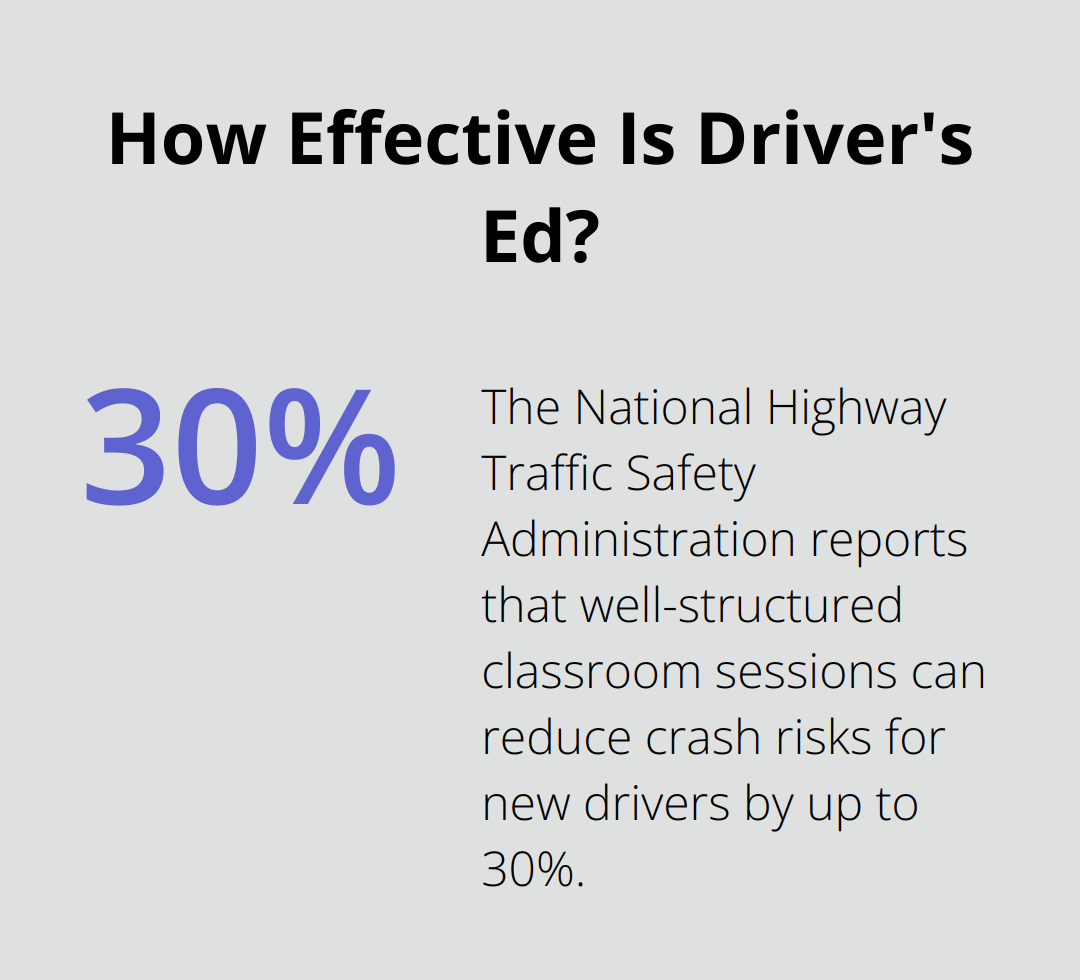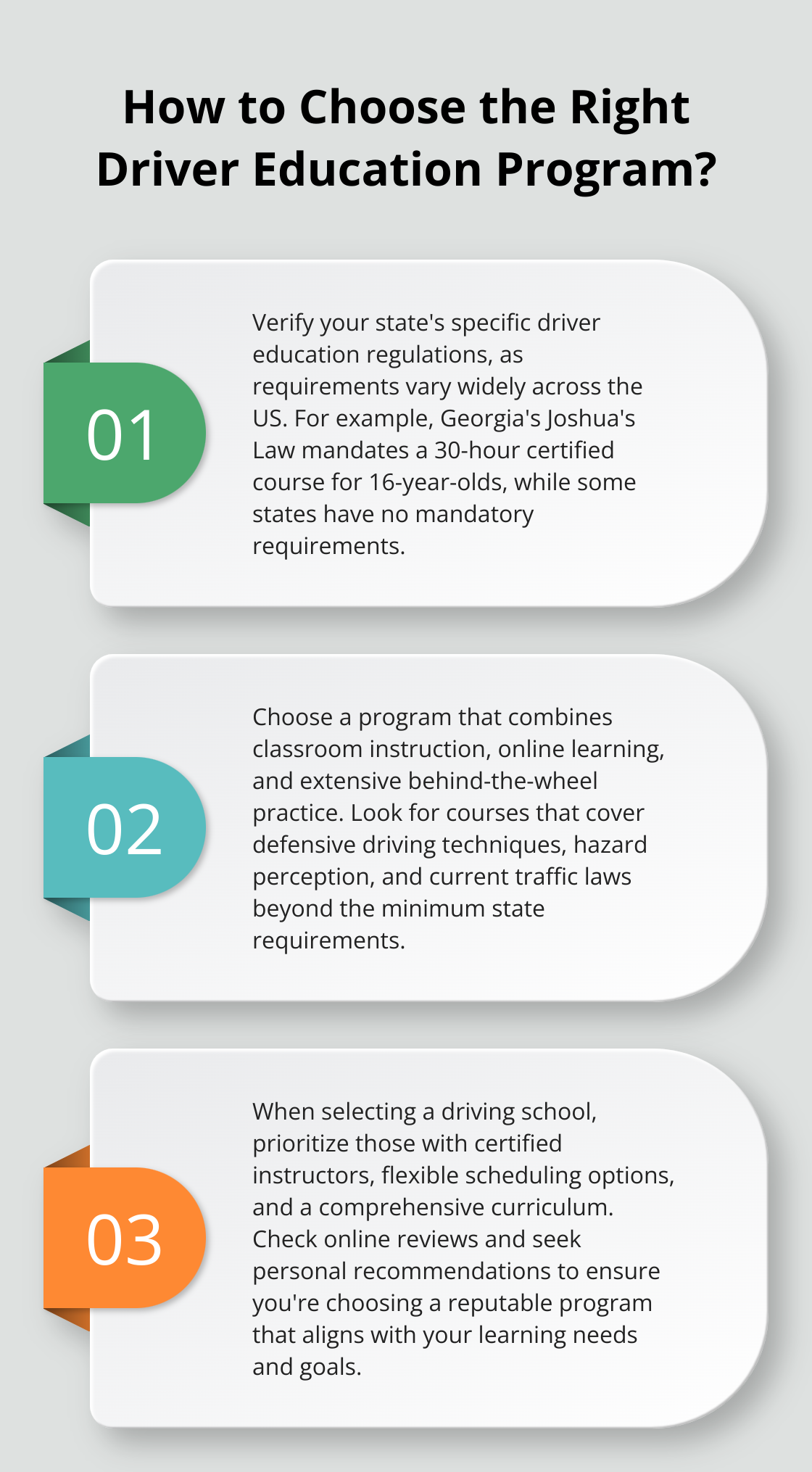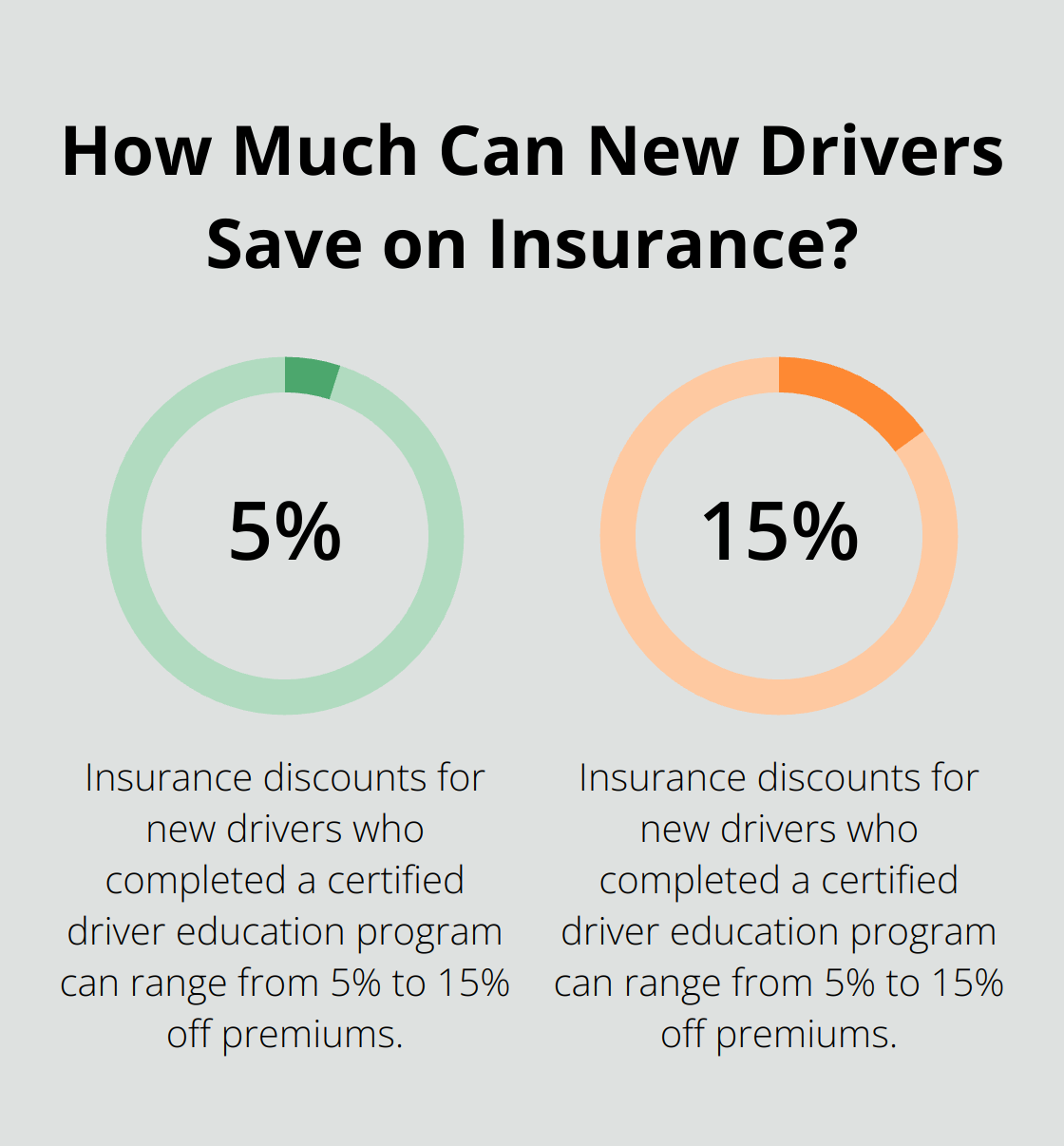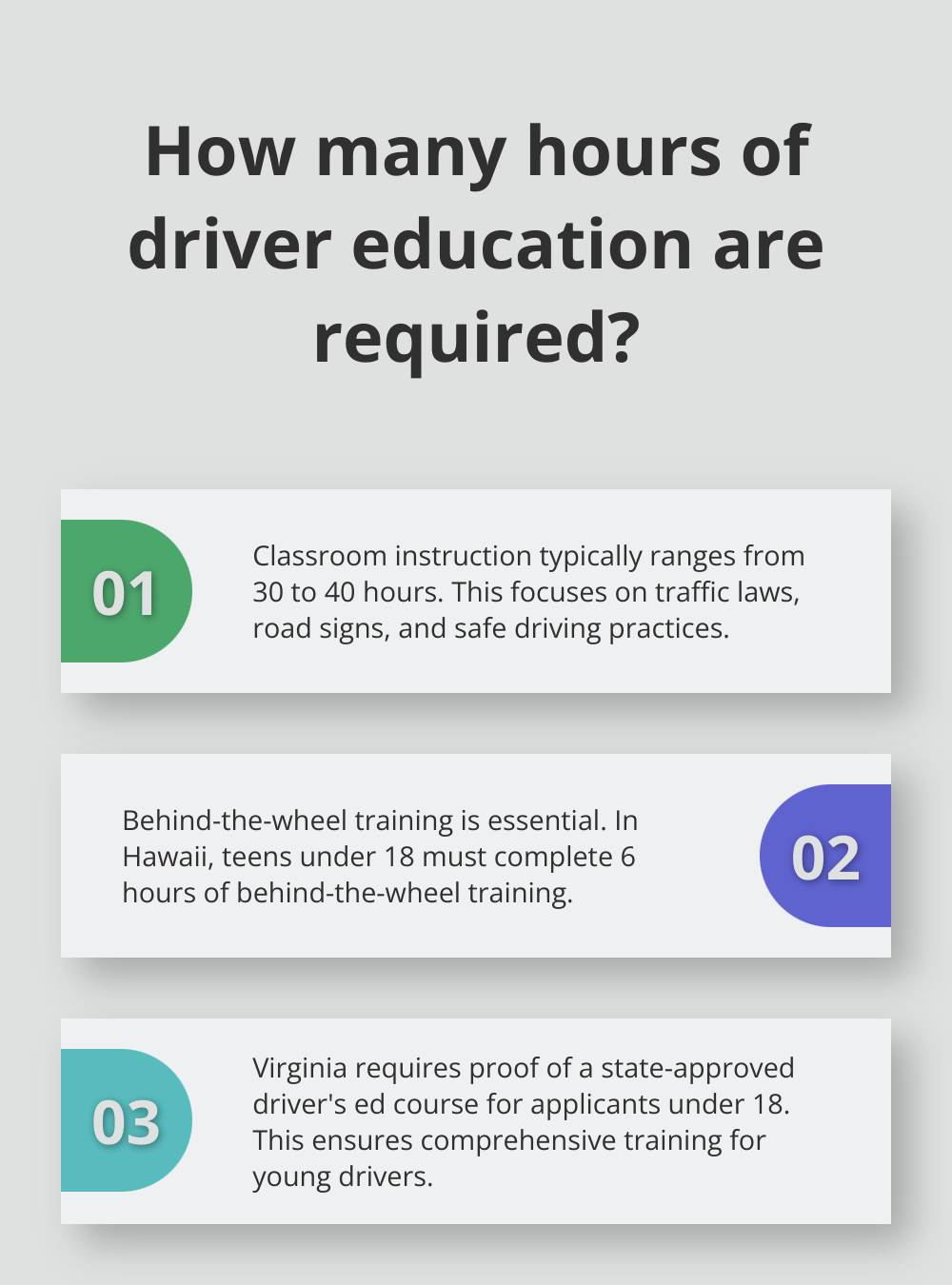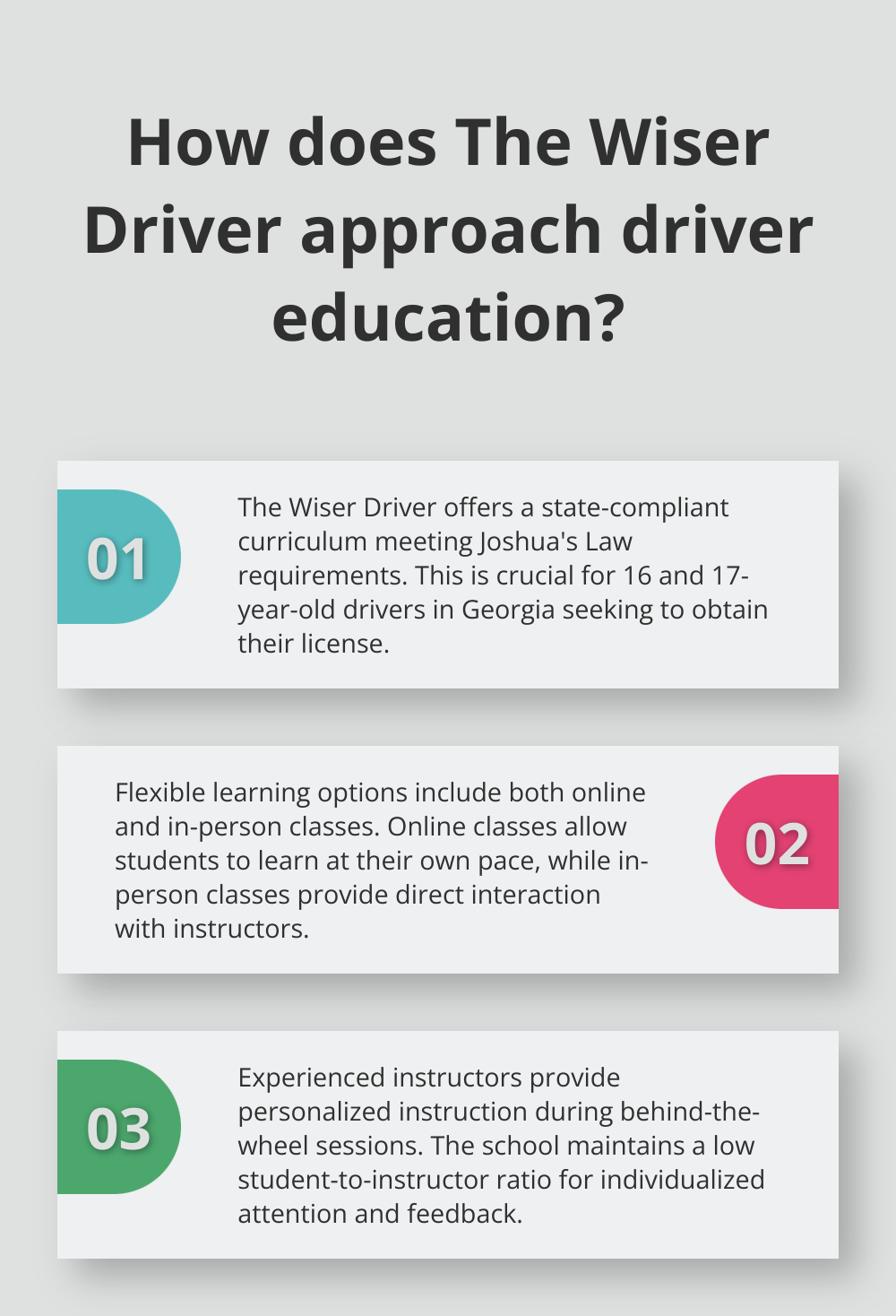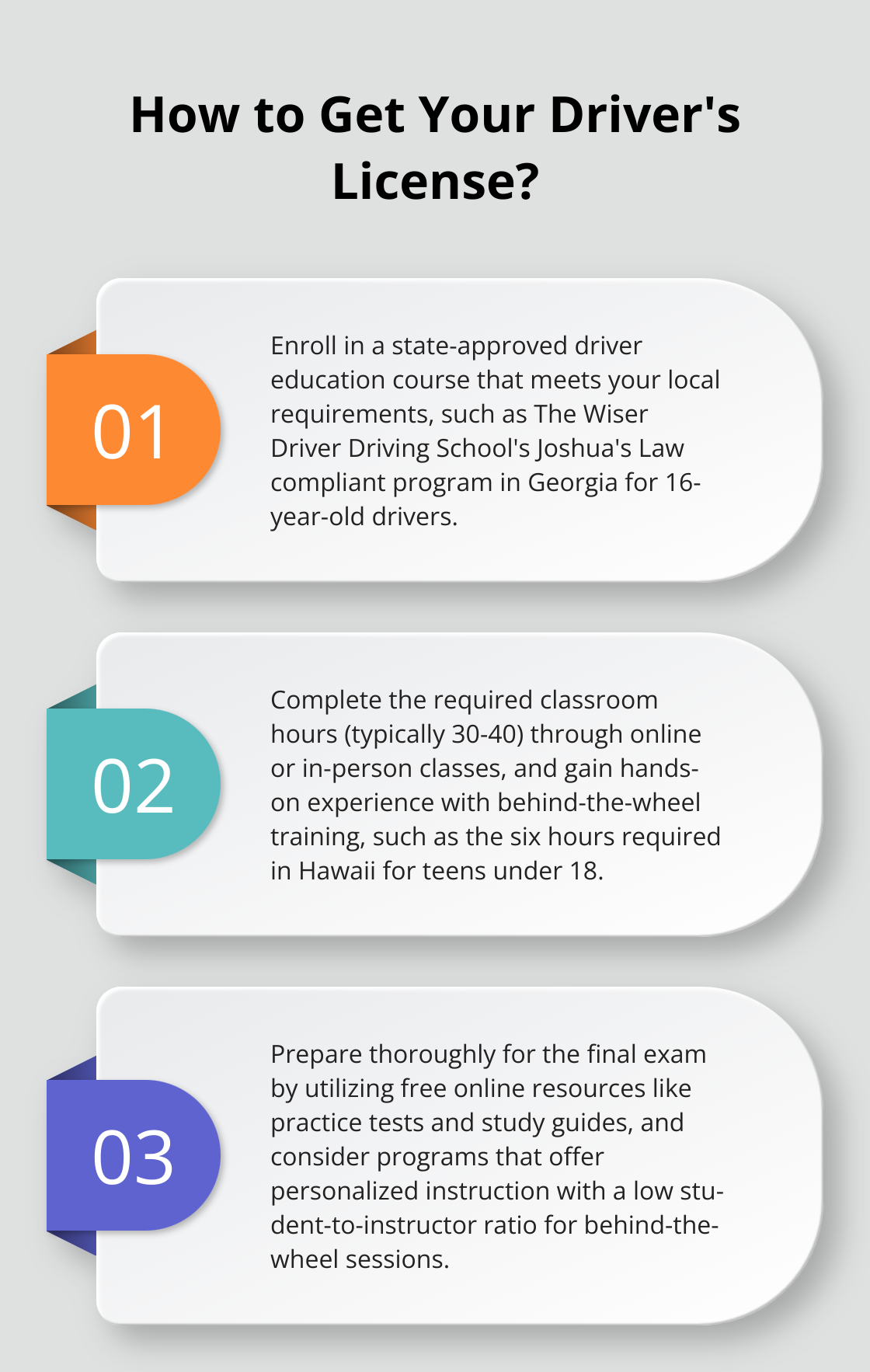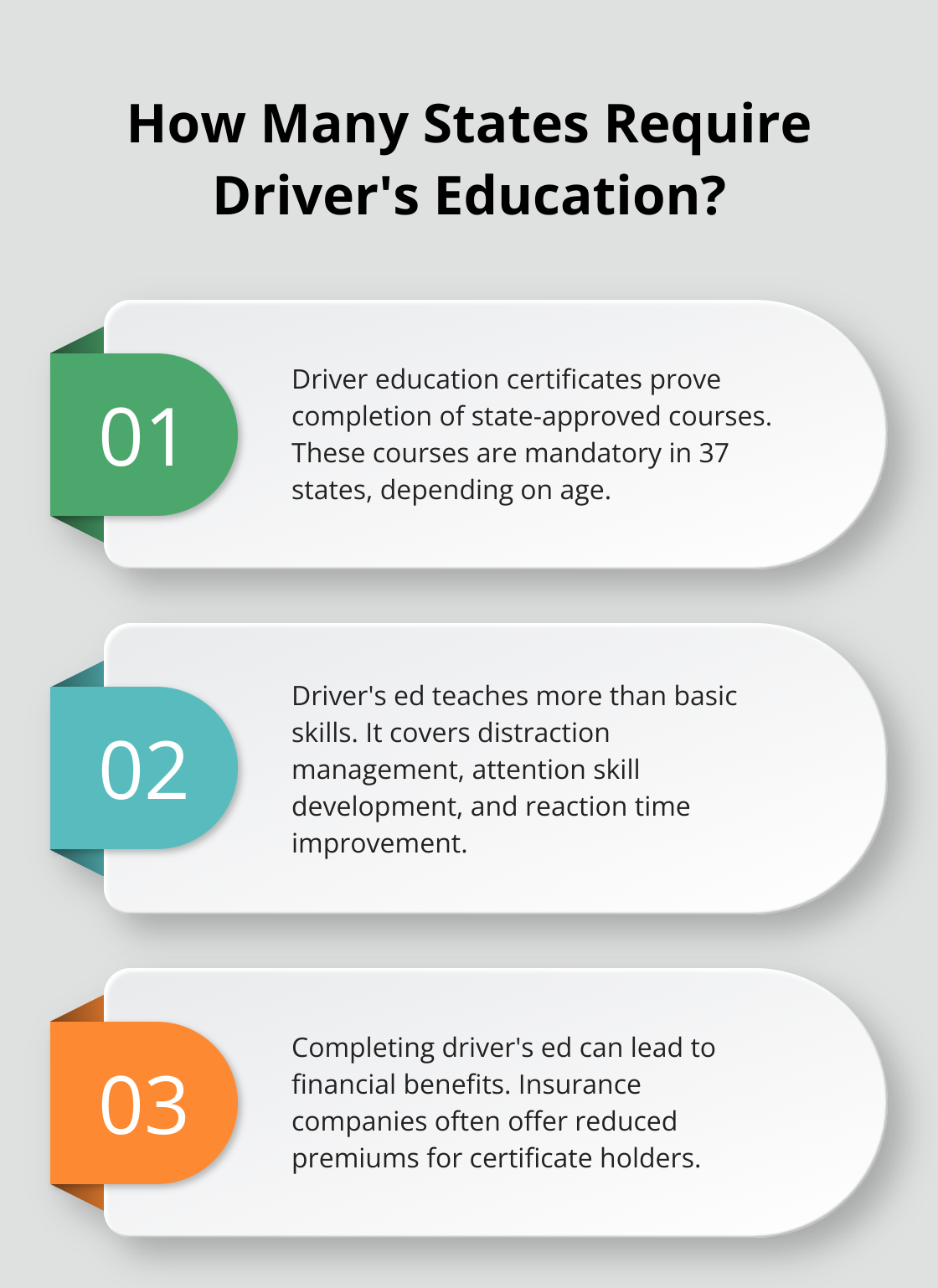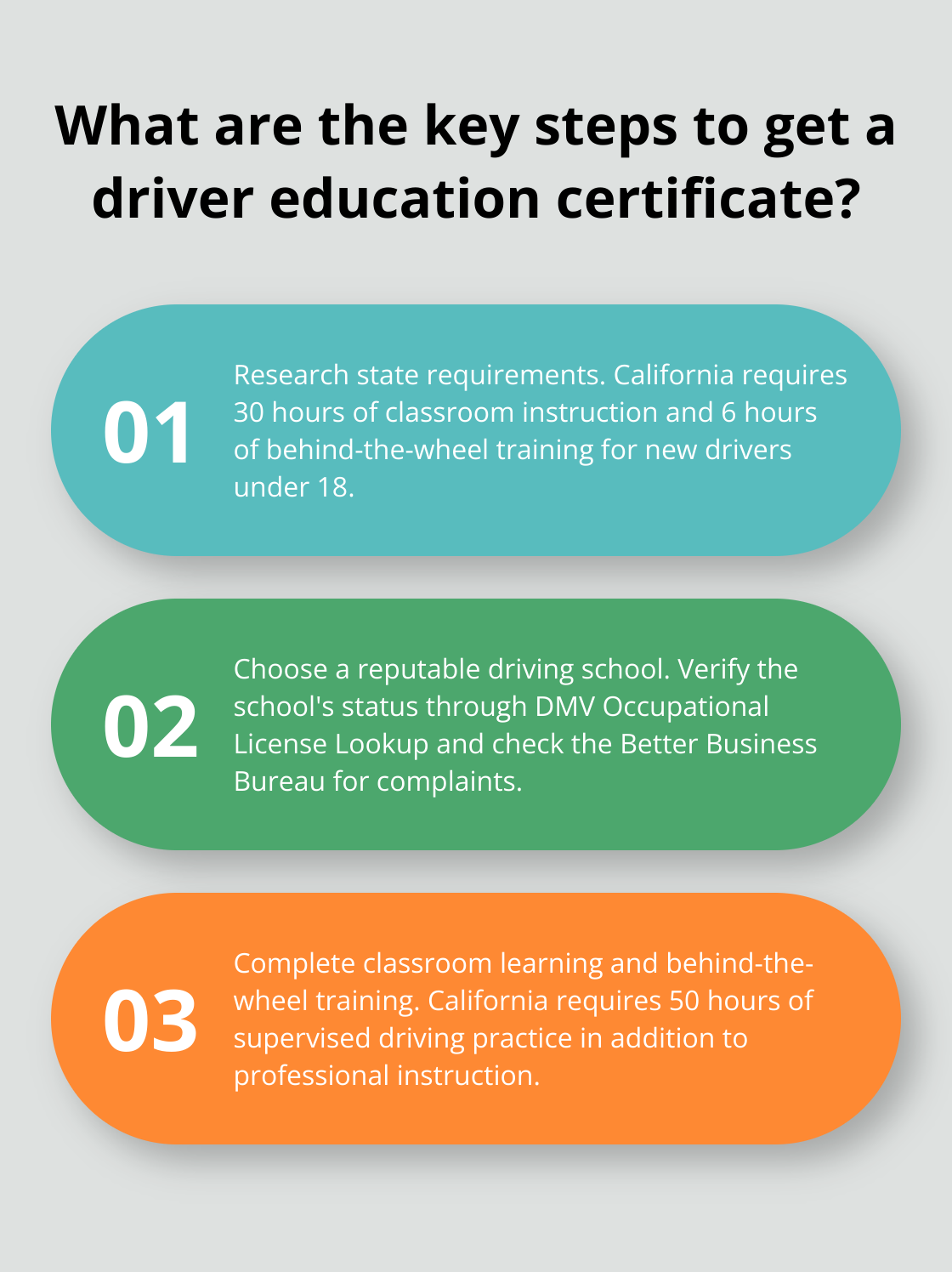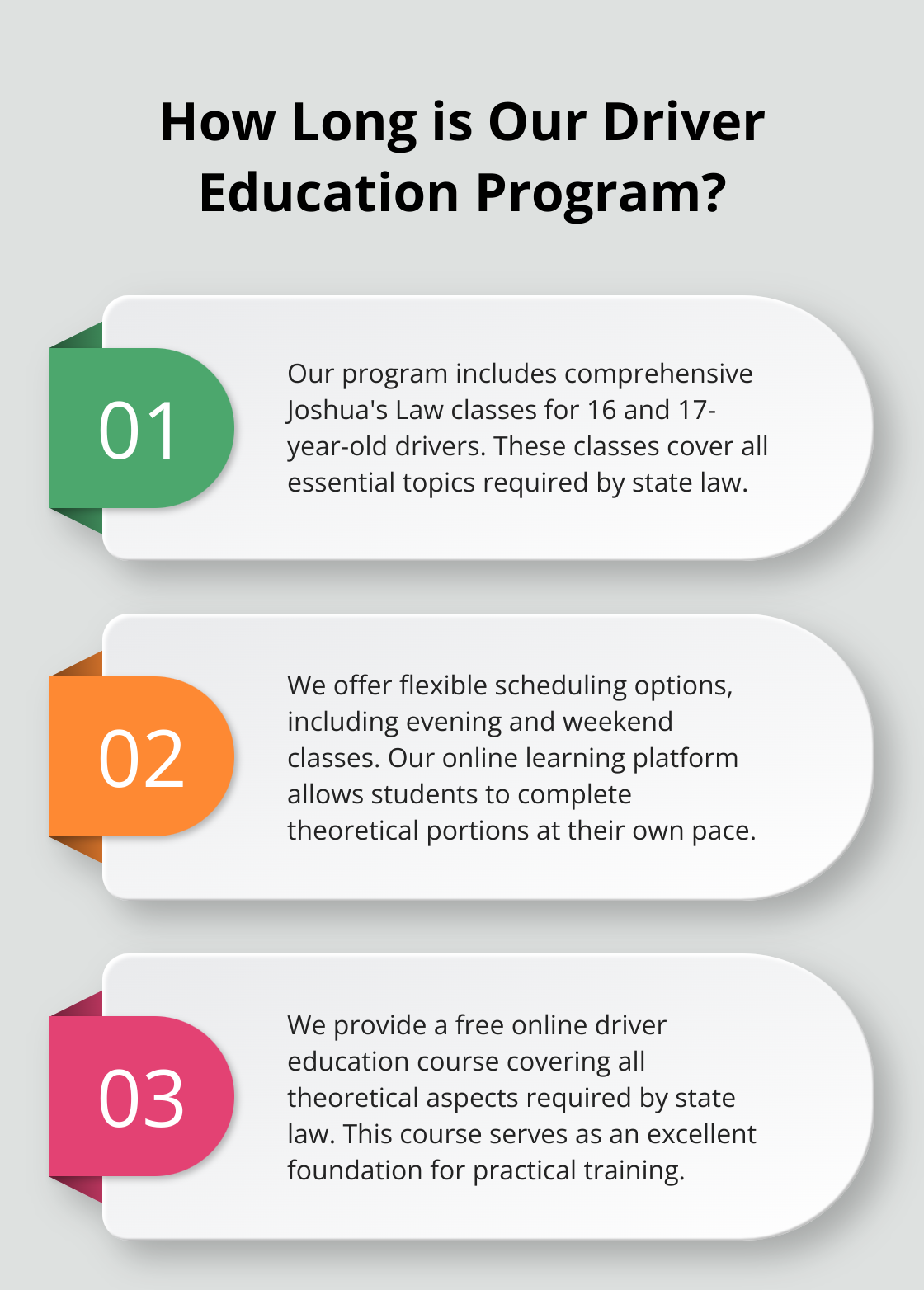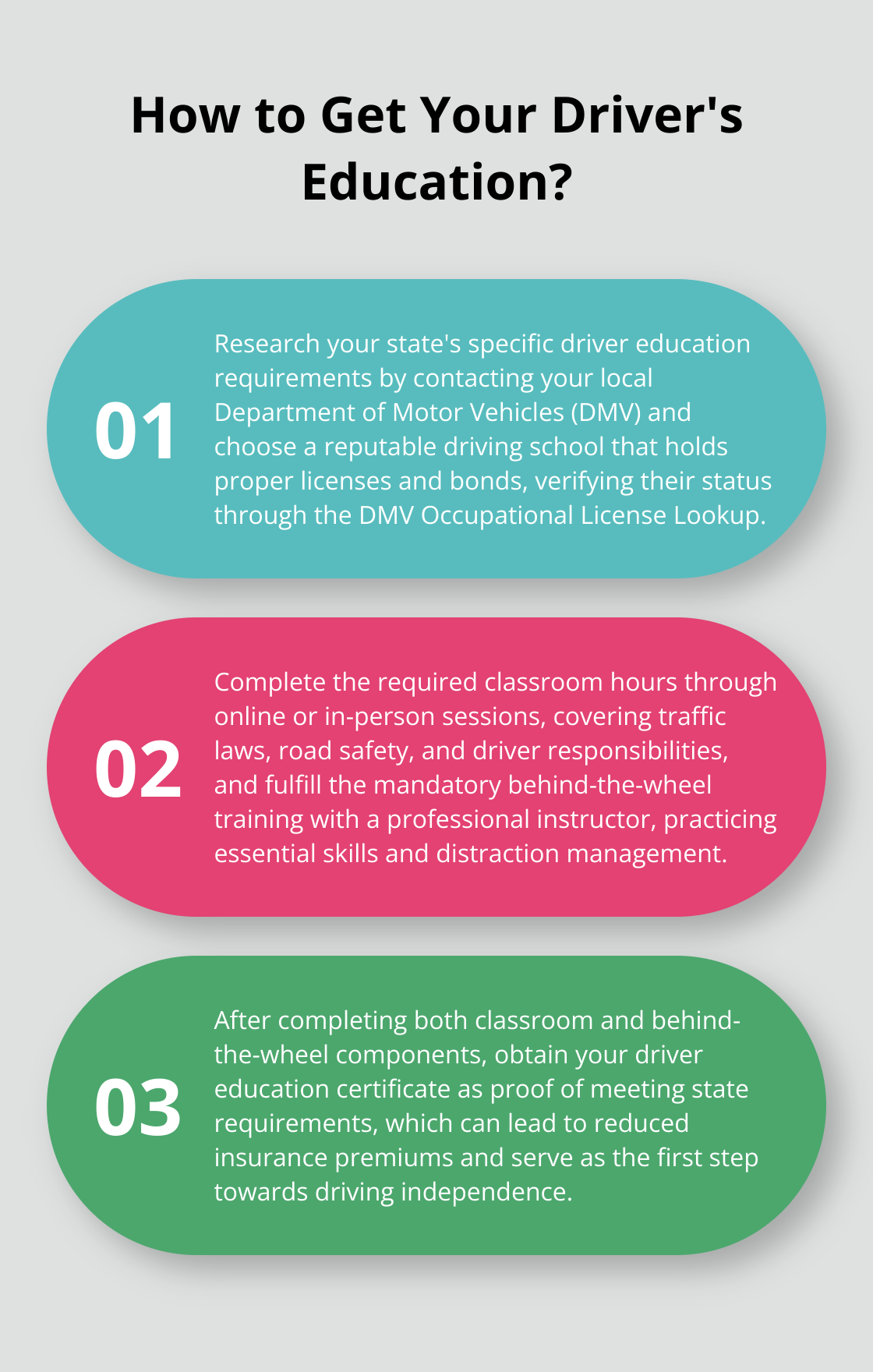How to Complete a 30-Hour Driver Education Course
At The Wiser Driver Driving School, we know that completing a 30-hour driver education course is a big step towards becoming a safe and confident driver.
This comprehensive program covers essential driving skills, traffic laws, and road safety practices. It’s designed to equip new drivers with the knowledge and experience they need to navigate today’s roads responsibly.
In this guide, we’ll walk you through the process of completing your 30-hour driver education course, offering valuable tips and insights along the way.
Why Driver Education Is Essential
The Foundation of Safe Driving
At The Wiser Driver Driving School, we understand that a 30-hour driver education course forms the bedrock of safe and responsible driving. This comprehensive program transcends the basics of vehicle operation; it imparts vital knowledge and skills that can prevent accidents and save lives on the road.
Purpose and Impact
Driver education introduces students to the multifaceted world of driving. It covers a wide range of topics, from fundamental traffic laws to advanced defensive driving strategies. However, it’s important to note that multiple evaluations have failed to provide evidence for decreased crash rates among teen drivers who completed driver education.
State-Specific Legal Requirements
It’s crucial to note that driver education requirements differ across states. As of July 11, 2024, there are 37 states where driver’s education classes are mandatory depending on your age. For instance, Georgia’s Joshua’s Law requires all 16-year-olds to complete a state-approved driver education course before obtaining their license. The Wiser Driver Driving School offers state-required Joshua’s Law classes to ensure our students meet these legal obligations.
Enduring Benefits
The advantages of completing a 30-hour course extend far beyond passing the initial driving test. Many insurance companies offer discounts for young drivers who have completed recognized courses.
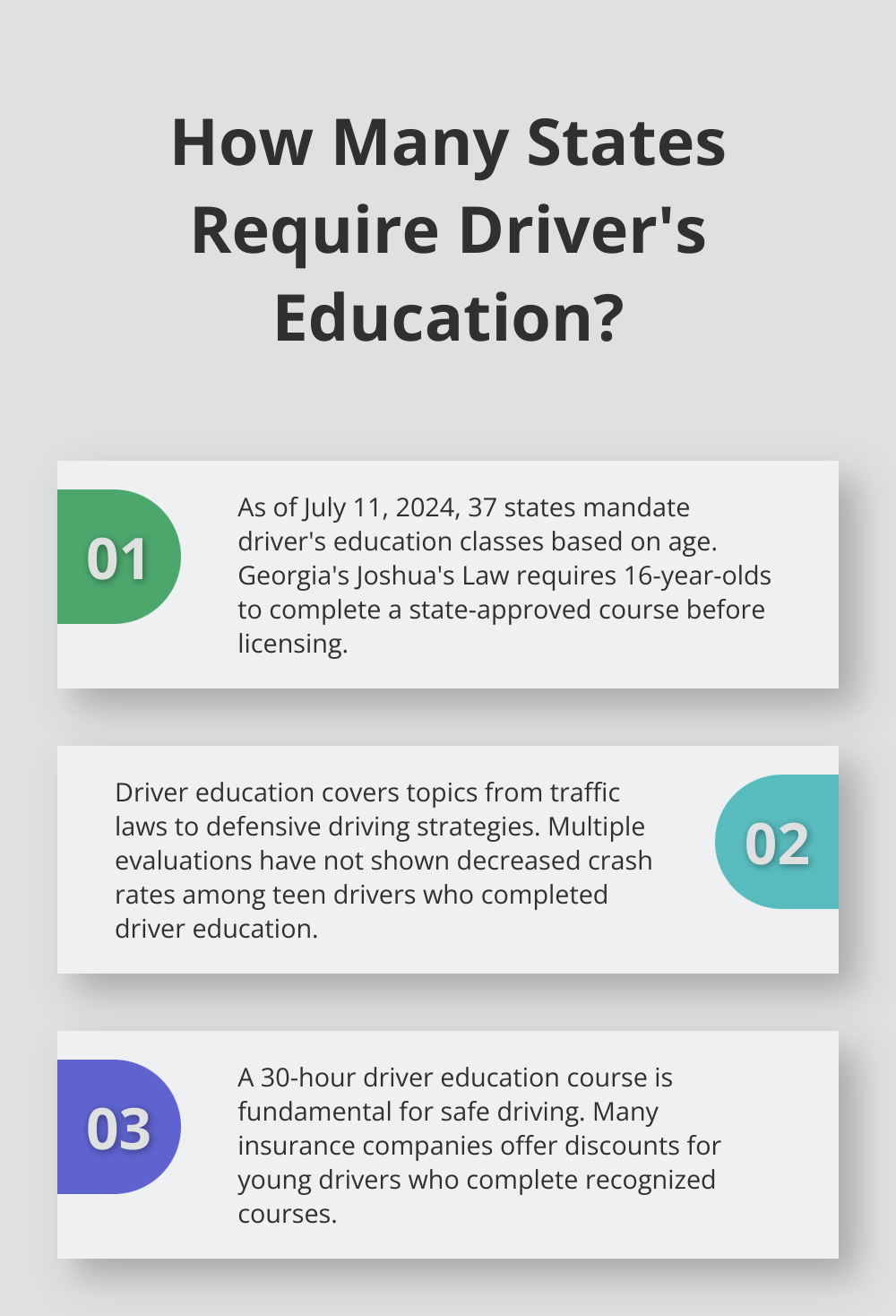
Furthermore, the skills acquired through driver education often translate into lifelong safe driving habits. Drivers with formal education may develop better driving practices throughout their driving careers.
Beyond the Basics
The Wiser Driver Driving School doesn’t just prepare students to pass a test; we equip them for a lifetime of safe driving. Our comprehensive programs, including defensive driving courses and personalized lessons, aim to create skilled, confident drivers who contribute to safer roads for all.
As we move forward, let’s explore the specific content and structure of a typical 30-hour driver education course, providing you with a clear roadmap for your learning journey.
What Does a 30-Hour Driver Education Course Cover?
Curriculum Overview
A 30-hour driver education course provides a comprehensive learning experience. The curriculum covers all essential aspects of driving, from basic vehicle operation to advanced safety techniques.
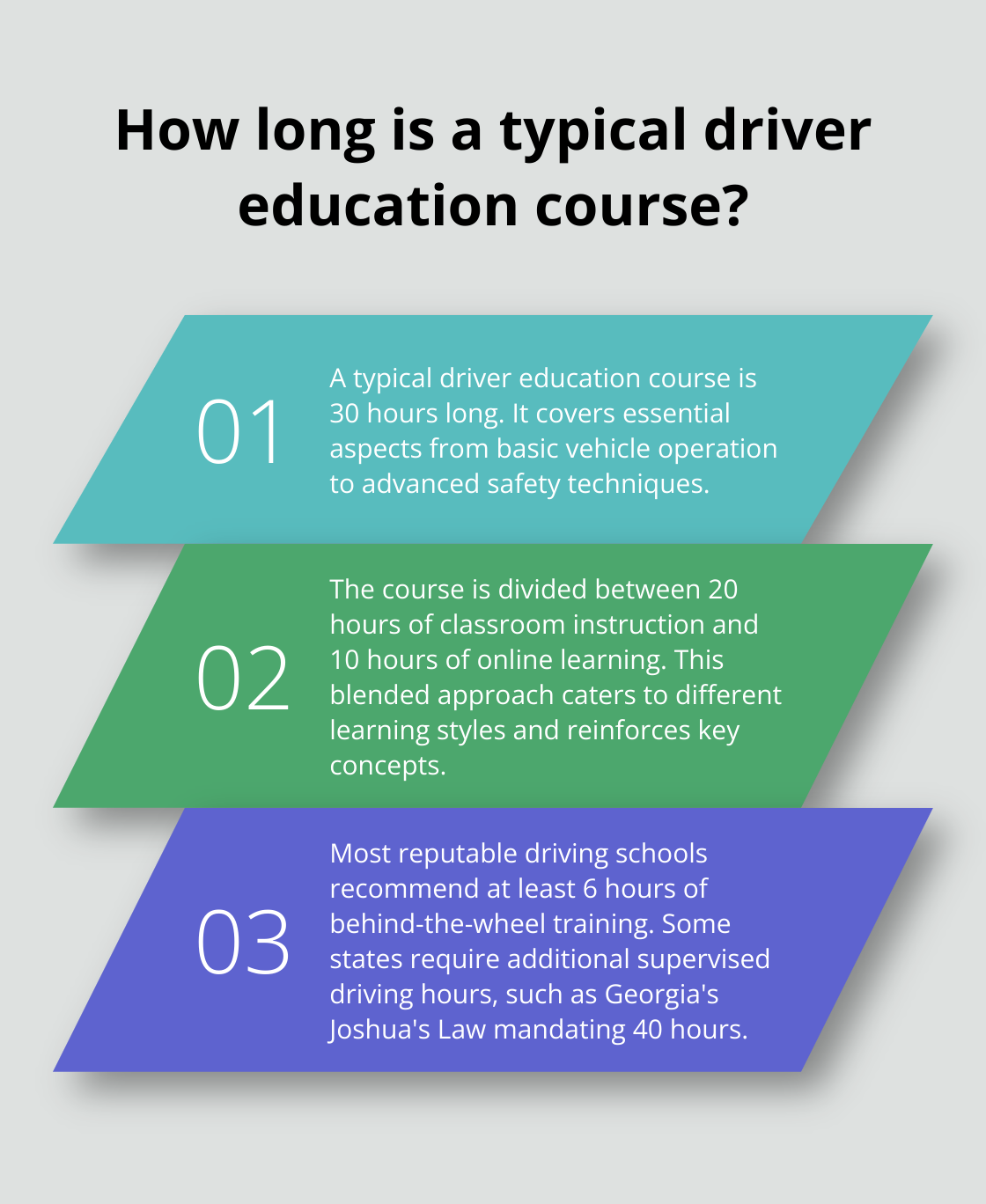
The course typically starts with an introduction to traffic laws and road signs. Students learn about right-of-way rules, speed limits, and the meaning of various road markings. The curriculum then progresses to more complex topics such as defensive driving techniques, handling adverse weather conditions, and managing distractions while driving.
A significant portion of the curriculum focuses on risk awareness and accident prevention. Students identify potential hazards on the road and develop strategies to avoid them. The course also covers the dangers of impaired driving (including alcohol and drug use), as well as the risks associated with drowsy driving.
Classroom and Online Learning
The 30-hour course divides between classroom instruction and online learning. Typically, about 20 hours take place in a traditional classroom setting, where students engage in discussions, watch instructional videos, and participate in interactive exercises. The remaining 10 hours occur online, allowing for flexibility in scheduling and self-paced learning.
During online sessions, students access multimedia content, take practice quizzes, and complete assignments. This blended approach caters to different learning styles and reinforces key concepts through varied teaching methods.
Behind-the-Wheel Training
While not officially part of the 30-hour curriculum, practical driving lessons form a critical component of driver education. Most reputable driving schools (including The Wiser Driver Driving School) recommend at least 6 hours of behind-the-wheel training with a professional instructor. These sessions allow students to apply their theoretical knowledge in real-world driving situations.
During these lessons, instructors guide students through various driving scenarios, including city driving, highway merging, parallel parking, and night driving. This hands-on experience builds confidence and develops proper driving habits.
It’s important to note that some states require additional supervised driving hours with a parent or guardian. For example, Georgia’s Joshua’s Law mandates 40 hours of supervised driving (including 6 hours at night) in addition to the 30-hour course.
State-Specific Requirements
Driver education requirements vary across states. Some states, like Kansas and North Dakota, require more hours for drivers under age 16, while others, such as Alabama and Arizona, allow learner-drivers to complete fewer hours.
Students should always check their local Department of Motor Vehicles (DMV) or equivalent agency for the most up-to-date requirements. This ensures compliance with state laws and maximizes the benefits of driver education.
The next section will explore effective strategies to succeed in your 30-hour driver education course, helping you make the most of this valuable learning experience.
How to Excel in Your Driver Education Course
Create a Study Schedule
A structured study schedule will help you tackle your driver education course effectively. Allocate specific time slots for studying throughout your week to cover all course materials without feeling overwhelmed. You can dedicate one hour each evening to review course content, or set aside larger blocks of time on weekends for more intensive study sessions.
Research on learning and memory suggests that spaced learning can impact the quality and effectiveness of driver education programs. Try 30-45 minute study sessions with short breaks in between to maximize retention and minimize fatigue.
Utilize Active Learning Techniques
Passive reading of course materials often leads to poor information retention. Instead, engage with the content actively. Create flashcards for traffic signs and rules, quiz yourself regularly, or explain concepts to friends or family members.
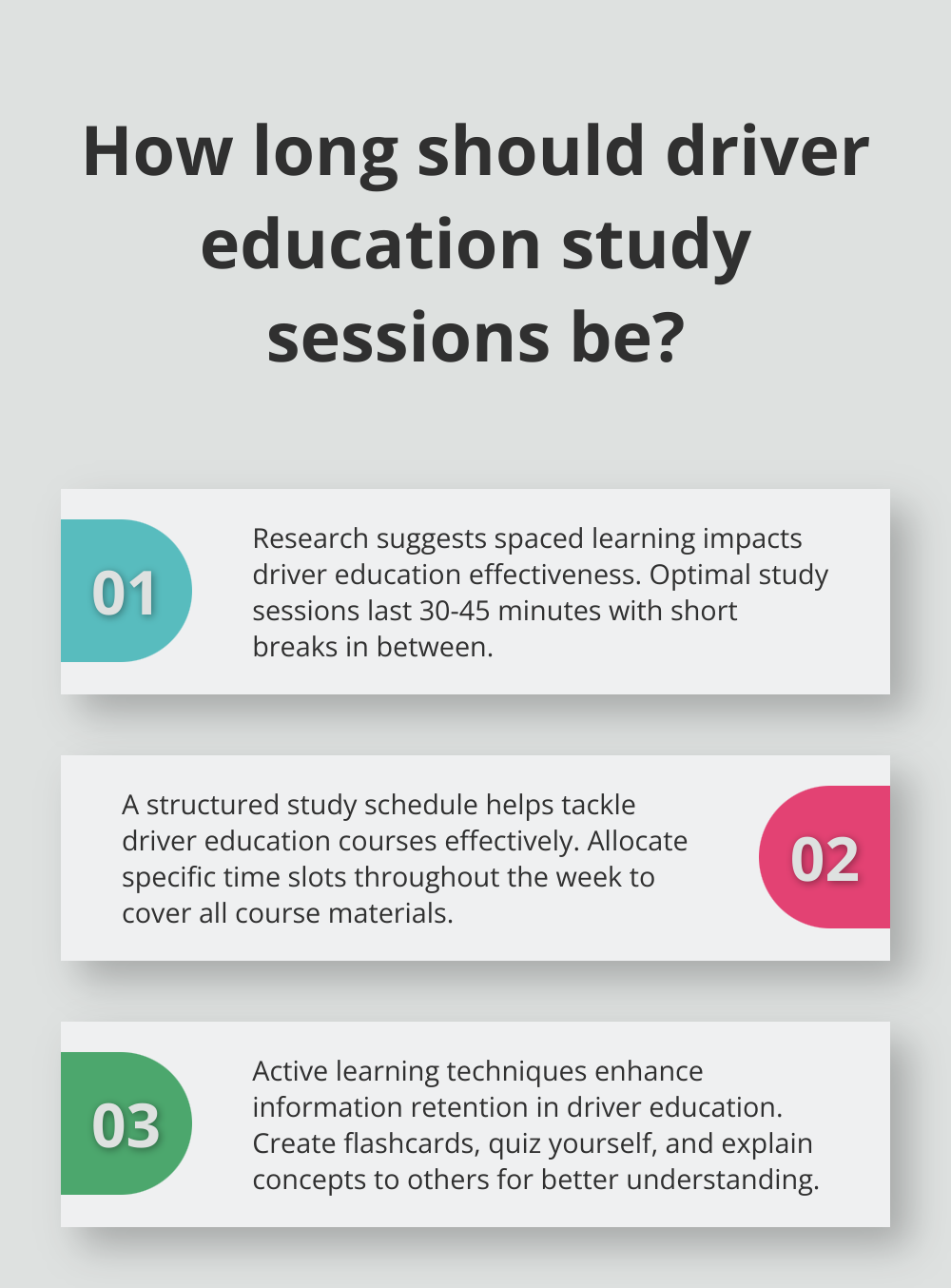
Another effective technique involves relating driving concepts to real-life scenarios. When you’re a passenger in a car, observe the driver’s actions and connect them to what you’ve learned in your course. This practical application of knowledge can significantly enhance your understanding and retention of driving principles.
Prepare Thoroughly for Exams
Preparation for both written and practical exams is essential. For the written test, take advantage of practice exams available online or through your driving school.
For the practical driving test, ensure you’ve had ample behind-the-wheel practice. While the 30-hour course provides a solid foundation, additional practice is key.
Seek Additional Support
If you find certain concepts challenging, don’t hesitate to seek additional support. Many driving schools (including The Wiser Driver Driving School) offer personalized driving lessons to complement your course. Experienced instructors can help you identify areas for improvement and build your confidence behind the wheel.
Apply Knowledge in Real-World Situations
Whenever possible, apply what you’ve learned in real-world situations (under proper supervision, of course). This could involve discussing traffic scenarios with a licensed driver while in the car, identifying road signs during trips, or practicing safe driving habits as a passenger. The more you connect your learning to real-life experiences, the better prepared you’ll be for both your exams and future independent driving.
Final Thoughts
A 30-hour driver education course marks a significant milestone in your journey to become a safe and responsible driver. This comprehensive program equips you with essential knowledge and skills that extend far beyond passing your initial driving test. You’ll develop a deeper understanding of traffic laws, road safety practices, and defensive driving techniques.
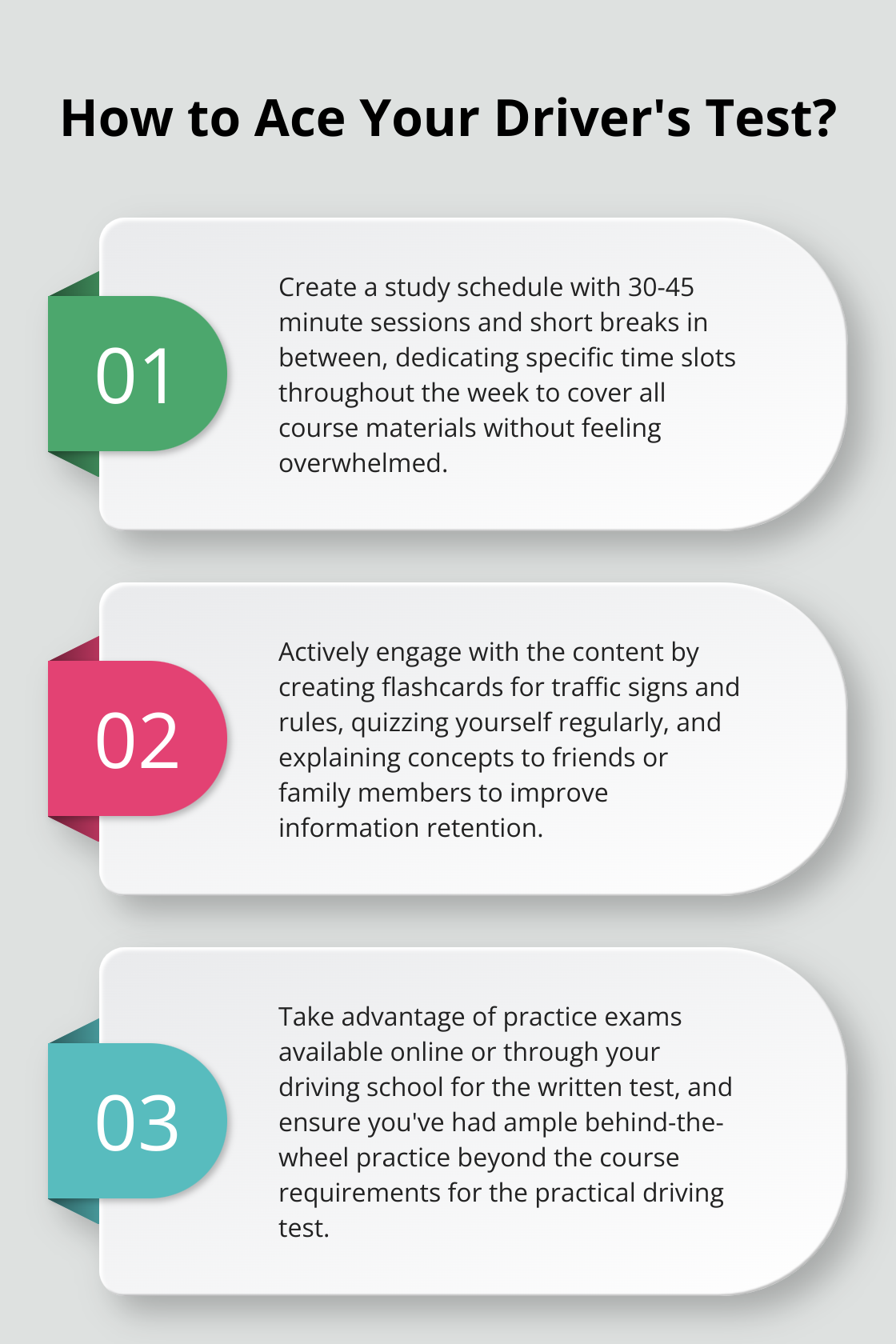
The benefits of completing a driver education course last long after you finish the program. Many insurance companies recognize the value of driver education and offer discounts to young drivers who complete recognized courses. Your journey doesn’t end after you finish your 30-hour course; you should continue to practice and refine your skills through additional behind-the-wheel training.
The Wiser Driver Driving School offers a range of comprehensive programs designed for drivers of all ages. We provide state-required Joshua’s Law classes, personalized driving lessons, and defensive driving courses. Our experienced instructors deliver hands-on learning experiences to help you become a confident and skilled driver.


